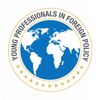By Margo Berends
Sustainable development remains one of the most important and elusive challenges of our time. Making headway requires an integrated, holistic, and global strategy. The United Nations' (UN) new sustainable development agenda presents a markedly improved approach compared to previous international efforts by focusing on all aspects of development: political, social, economic, and environmental.
On September 25, 2015, the UN adopted the Sustainable Development Goals (SDGs). These seventeen goals and corresponding 169 targets outline international development priorities through 2030. They also replace the UN's eight Millennium Development Goals (MDGs), which have driven the development agenda since 2000 and expired in 2015. The SDGs are an improvement upon the MDGs in many ways, creating a positive environment for the post-2015 development agenda.
The MDGs achieved immense progress by focusing primarily on poverty and global health in developing countries. The UN's 2015 Millennium Development Goals Report recognizes that substantial gains were made: halving the number of people living in extreme poverty, increasing the number of children attending school by eight percent, and averting over 13 million deaths due to HIV/AIDS and malaria.
However, not all targets were met and there is still significant progress to be made. In order to ensure basic human rights and equality for all people, there is considerable work to be done, particularly in achieving gender equality, decreasing income inequality, and ensuring environmental sustainability, as well as in other areas untouched by the MDGs. Under the MDGs, Sub-Saharan Africa realized the greatest gains of any region, but still lags considerably behind Asia, the Middle East, and Latin and South America on all development indicators.
But the SDGs ambitiously aim to go beyond addressing the gaps that remain after the conclusion of the MDGs. While the MDGs largely succeeded in halving the proportion of people living in extreme poverty and suffering from hunger, the SDGs hope to "end poverty in all its forms everywhere" and eradicate hunger by achieving food security, improving nutrition, and promoting sustainable agriculture. These are no small tasks, and analysts estimate that achieving the SDGs will cost between $3.3 and $4.5 trillion per year in investment, aid, and state spending.
Part of the reason for this high cost is that the SDGs are more comprehensive in their approach to development and go beyond the MDG's primary focus on poverty and health. They hone in on sustainability by balancing the three main aspects of development: social, economic, and environmental. For example, goal sixteen focuses on promoting peaceful and just societies based on rule of law and free from corruption, and goal seven aims for affordable and reliable access to energy for everyone. The post-2015 development agenda also places a greater emphasis on gender equality and the empowerment of women and girls than the MDGs did, as well as environmental conservation and protection, which was almost left out of the MDGs entirely.
While the MDGs focused exclusively on developing countries, the SDGs have transcended them in both purpose and scope by including priorities and targets for all countries, regardless of their GDP and income level. Goal ten aims to reduce inequality within and among countries, explicitly highlighting the issue of inequality in wealthy countries. Goals thirteen, fourteen, and fifteen center on climate change and environmental conservation and sustainability, important global challenges that require worldwide participation.
The process by which the SDGs were developed also represents an improvement upon the MDGs and reflects their truly universal nature. The MDGs were created by a small team of experts in the basement of the UN headquarters in New York without any external input. The SDGs, on the other hand, were crafted over three years by an Open Working Group, which includes representative from 70 countries and all regions of the world. This more inclusive process, in which diverse voices were represented, should ensure true global ownership of the goals and eliminate the "West versus the rest" dynamic that was perceived to underlie the MDGs.
Achieving the SDGs will require a considerable, sustained, financial and political commitment from every country in the world. The SDGs have set a remarkably inclusive and holistic agenda for the international community, unlike any we have seen before. The SDGs should allow us to build upon the momentum created by the MDGs, while addressing a myriad of international challenges that previously lay outside the purview of what was considered 'development'.
Margo Berends is an expert in sustainable development with a research background in sub-Saharan Africa and program management experience in the Middle East, India, and Brazil. She is currently a Program Associate at Global Communities and a 2016 Sustainable Development Fellow at YPFP.
